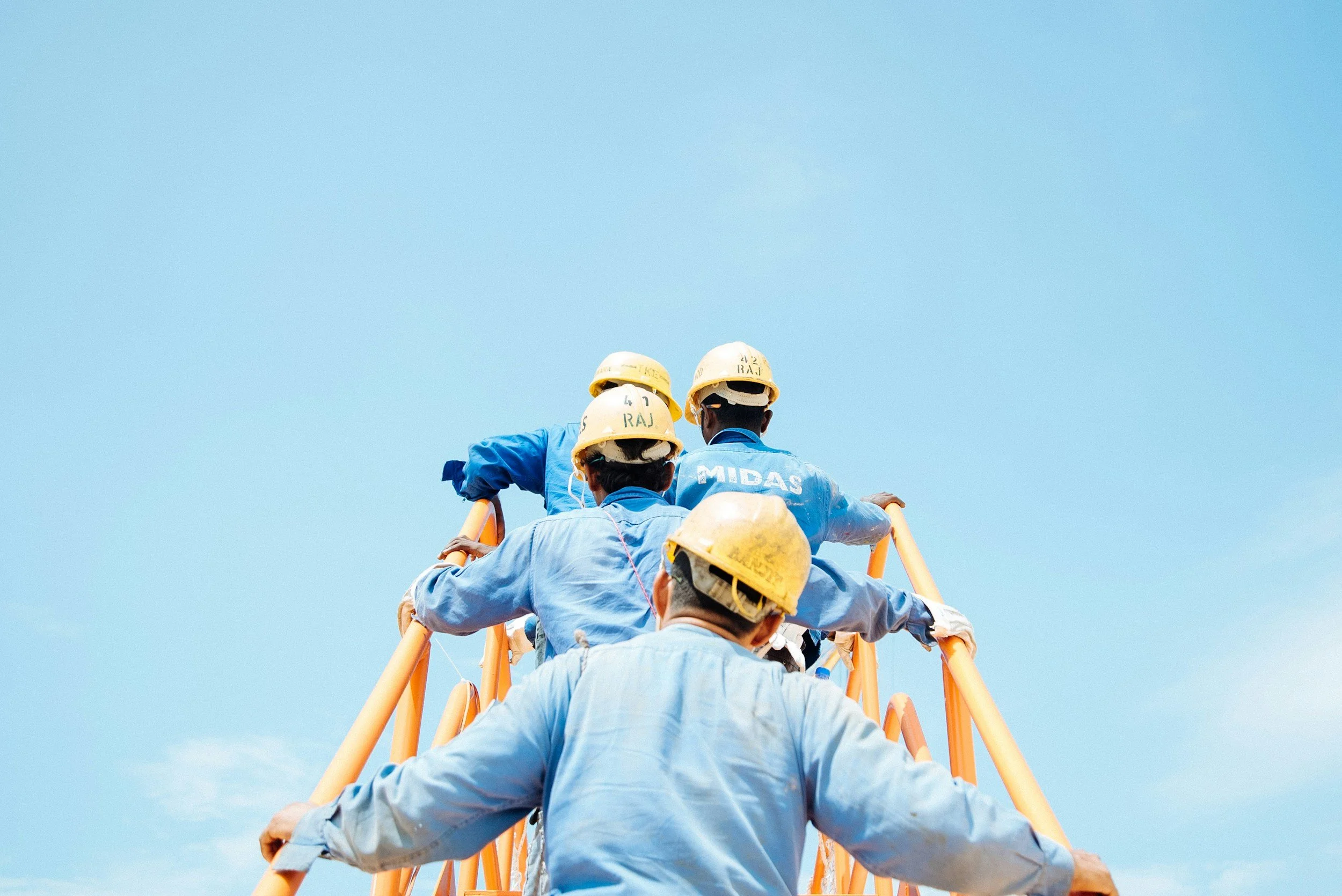
Hard Hats and Bricks: Rethinking Mental Health Interventions at Work
Jordan Friesen, O.T. Reg. (MB)
Founder, Mindset Strategy
What if I told you building employee resilience should actually be your last resort?
Imagine you’re on a construction site. We can all agree that before you step foot on that site, you’d better be geared up. Hard hats and steel-toe boots are non-negotiable. It’s just common sense.
But now imagine this same site has a problem: at random times during the day, bricks fall from five stories up. It doesn’t happen every minute, but it’s enough that it’s a real danger. At that point, it doesn’t matter how sturdy your hard hat is. Sooner or later, someone’s getting hurt.
This is what support for mental health often looks like in workplaces. Employers hand out “hard hats;” things like benefits and resilience training, and trust they’re doing enough to support their people. But if we don’t figure out where the bricks are coming from, people are still going to get hurt.
Hard Hats Are Necessary, But They Aren’t Enough
I want to be very clear in emphasizing that those hard hats matter. Things like EAPs, mental health benefits, and burnout recovery supports play an important role in the workplace. But they only kick in after someone’s already struggling. They’re reactive by design.
The harder work, and where real progress happens, is identifying the bricks. If we want to trigger change, we need to know what’s actually causing unnecessary stress, what’s making people feel overwhelmed, unsafe, or unsupported, and question how we can stop those things from happening in the first place.
So, What Are the Bricks?
In our line of work, we often refer to these “bricks” as psychosocial hazards. If you’re based in Canada, you’ve likely heard of the “13 Workplace Factors” — a set of guidelines in our national standard for psychological health and safety. They’re useful, but a more helpful framework comes from our friends in Australia which, coincidentally, makes the work of “brick finding” mandatory for all companies in the country.
SafeWork Australia’s Model Code of Practice identifies the following types of psychosocial hazards:
Work Design or Management – things like low control, poor management support, or role ambiguity.
Work Environment – poor change management, lack of recognition, remote or isolated work.
Workplace Interactions – including bullying, harassment, and discrimination.
And importantly, they also acknowledged that physically unsafe or inaccessible environments can cause psychological harm.
That Same Safety Lens, But Applied to Mental Health
In physical safety, we talk about something called the “hierarchy of controls.” The best protections eradicate the hazard altogether, and the weakest are those last-line defences, like PPE and resilience training.
We can apply the same idea to mental health in the workplace:
Eliminate: Start by removing what’s causing the most harm, like toxic leadership or unclear expectations.
Re-Design: Find new ways of working to help people succeed.
Adjust: Change systems, processes, or policies to make things easier, clearer, or more enforceable.
Educate: Train workers to identify risks and look out for their own mental health (e.g. resilience training).
Support: Provide supportive resources to help people when they're struggling (e.g. benefits, EAP).
In a nutshell, your EAP isn’t creating a mentally healthy workplace, and individual education and training isn’t giving you the benefits you might think it is.
A Real World Example
We do quite a bit of work with professional services firms like accountants, lawyers, and engineers (not because they’re necessarily less healthy, it’s just coincidence!). Across these sectors, we see a common set of psychosocial hazards.
Take law firms, for example.
Here, we have high pressure, high burnout, and ongoing mental health concerns across the board (a recent study confirmed what many already feel). Why? Largely because of the almighty billable hour. It’s a system that rewards overwork, minimizes collaboration, and piles on stress.
When we think about applying the hierarchy of controls, we wouldn’t jump to time management training, mindfulness apps, or even “right to disconnect” policies. Instead, we would ask questions such as: What would change if we redesigned lawyer compensation to focus less on time and more on outcomes? Or if we incentivized teamwork instead of hoarding clients?
When we change the game itself, that’s where the real culture shift begins.
Resilience Is a Last Resort
In all workplaces — not just law firms — applying the hierarchy of controls doesn’t mean we eliminate all stress. Work will always be a little stressful because it demands something of us. But we should be asking: What’s causing stress that doesn’t need to be there?
And when you answer that question, you’ve found the brick. If we remove enough of them, people won’t need to be quite so resilient just to get through the day.
What Actually Drives Change?
Changing core aspects of how your organization runs is hard work. It usually takes something big (say, a global pandemic or new legislation) to get companies to change. The good news is that many of these legislative changes are already here or at least on the way.
But smart organizations don’t wait for a crisis or a shove from the government. The best-positioned ones get curious before things break and ask themselves: How are we making work harder than it needs to be? Where are we adding pressure without realizing it? And what could we change, even slightly, to make things better?
It’s not about handing out helmets and hoping for the best. The organizations making real progress are the ones asking the hard questions and acting on the answers. They’re willing to rethink what’s “normal” in service of something better.
If you lead a team, a project, or a whole company, start there. Don’t ask how to make your people more resilient, ask how to make their jobs less punishing. That’s where change begins.

